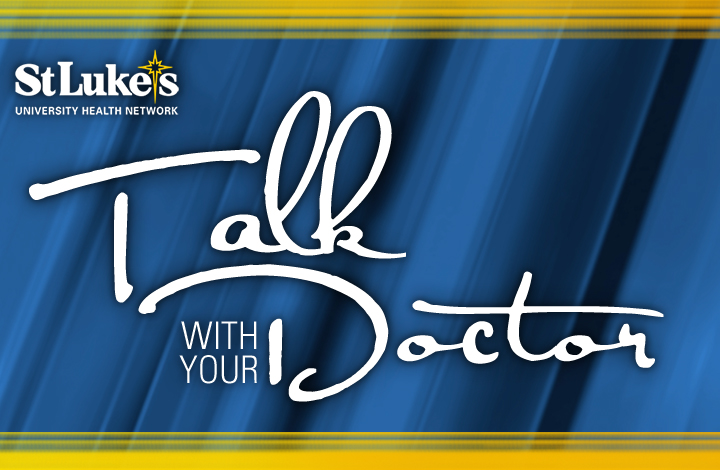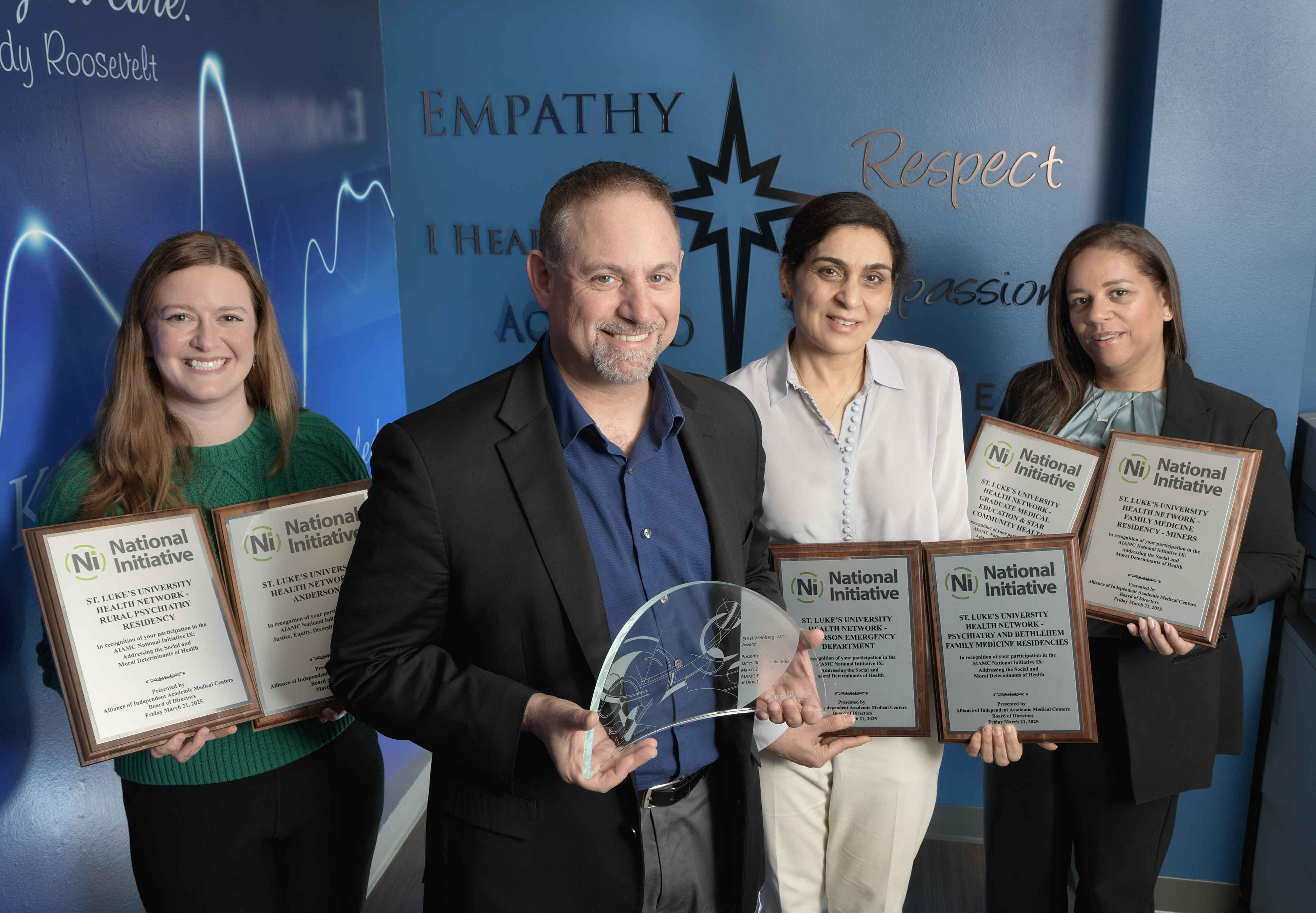St Luke’s One of First in World to Pilot Remote Patient Monitoring for COVID-19 Patients
April 07, 2020
Irvine, California and Bethlehem, Pennsylvania – April 7, 2020 – Masimo (NASDAQ: MASI) announced today that St. Luke’s University Health Network (SLUHN) is one of the first institutions worldwide to use Masimo SafetyNet™ to monitor in-hospital patients, as the network seeks innovative solutions to care for the surge of patients infected by COVID-19. Masimo SafetyNet is an innovative, economically scalable cloud-based patient management platform designed to help clinicians care for patients remotely in hospital settings and in non-traditional settings and circumstances.
The telehealth solution uses a tetherless, wearable single-patient-use sensor to monitor patients with clinically proven Masimo SET® pulse oximetry, and is designed to help manage the surge in COVID-19 patients while maintaining the safety of other patients and providers, allowing hospitals to expand patient remote monitoring into alternative care spaces, including overflow locations, emergency recovery facilities, and home care settings.
“This technology is game-changing in light of the crush of demand on our hospitals during this COVID-19 pandemic,” Aldo Carmona, MD, St. Luke’s Senior Vice President of Clinical Innovation and Chairman of the Department of Anesthesia and Critical Care, said. “With this wearable device, we can create temporary, pop-up respiratory monitoring units as needed to meet the changing patient volumes and track employees’ health in their homes if they have been exposed to COVID-19, the flu, or any other serious illness.”
Designed to track the blood oxygen saturation and respiration rate of patients who are hospitalized or quarantined at home, Masimo SafetyNet combines tetherless SET® pulse oximetry with a proprietary remote data capture and surveillance platform accessible from a patient’s Android or iOS smartphone or smart device. Monitoring key physiological data can help provide clinicans with an accurate snapshot of a patient’s systemic health and facilitates awareness of the need for rapid execution of treatment decisions that can be life-saving.
Patients are provided with a multi-day supply of single-patient-use sensors and access to the Masimo SafetyNet mobile app. With clinical feedback from St. Luke’s led by Dr. Carmona and from University Hospitals led by Dr. Peter Pronovost, Masimo SafetyNet has been designed for easy, intuitive use to provide customized, interactive CarePrograms that align with expert guidance on COVID-19. Monitoring data collected by the sensor is shared with the patient’s smartphone using a secure Bluetooth® connection. Twice daily, or as directed, the CareProgram can be configured to actively notify patients to answer questions such as, “are you having trouble breathing?” and “what is your temperature?”, and pushes these responses along with the monitoring data to clinicians for evaluation. CarePrograms are fully customizable to accommodate each institution’s protocols, each patient’s needs, and any changes in COVID-19 guidance—and can be updated through the cloud by providers even after being deployed, for maximum flexibility as situations evolve.
In addition to COVID-19 CarePrograms, Masimo SafetyNet can be configured for more than 150 other CarePrograms for use with COPD, heart failure, oncology, and other patients.
On March 30, patients at St. Luke’s University Health Network Bethlehem diagnosed with COVID-19 were outfitted with Masimo SafetyNet. Non-COVID-19 patients are also being monitored with this system in general medical-surgical units.
St. Luke’s plans to use the Masimo SafetyNet tetherless sensor and cloud-based surveillance system to monitor upwards of 2,000 hospitalized patients and lower acuity cases in the home. These may also include staff and patients who are quarantined at home with the virus.
“Our patients at St. Luke’s have the most sophisticated and reliable respiratory monitoring available anywhere,” Dr. Carmona says. “We know that continuous physiologic monitoring with Masimo’s Patient SafetyNet improves outcomes and saves lives. The ability to extend that capability to patients in non-traditional settings and at home during this crisis with Masimo SafetyNet is transformative. Only through our relationship with Masimo could this have been possible.”
Joe Kiani, Founder and CEO of Masimo, said, “Masimo is proud to be able to work with St. Luke’s to help protect the health and safety of medical professionals and the patients they serve during this global pandemic.”
Visit St. Luke’s COVID-19 site for the latest news and information on Coronavirus.
@MasimoInnovates | #Masimo
About Masimo
Masimo (NASDAQ: MASI) is a global medical technology company that develops and produces a wide array of industry-leading monitoring technologies, including innovative measurements, sensors, patient monitors, and automation and connectivity solutions. Our mission is to improve patient outcomes and reduce the cost of care. Masimo SET® Measure-through Motion and Low Perfusion™ pulse oximetry, introduced in 1995, has been shown in over 100 independent and objective studies to outperform other pulse oximetry technologies.1 Masimo SET® has also been shown to help clinicians reduce severe retinopathy of prematurity in neonates,2 improve CCHD screening in newborns,3 and, when used for continuous monitoring with Masimo Patient SafetyNet™ in post-surgical wards, reduce rapid response team activations, ICU transfers, and costs.4-6 Masimo SET® is estimated to be used on more than 200 million patients in leading hospitals and other healthcare settings around the world,7 and is the primary pulse oximetry at 9 of the top 10 hospitals listed in the 2019-20 U.S. News and World Report Best Hospitals Honor Roll.8 Masimo continues to refine SET® and in 2018, announced that SpO2 accuracy on RD SET® sensors during conditions of motion has been significantly improved, providing clinicians with even greater confidence that the SpO2 values they rely on accurately reflect a patient’s physiological status. In 2005, Masimo introduced rainbow® Pulse CO-Oximetry technology, allowing noninvasive and continuous monitoring of blood constituents that previously could only be measured invasively, including total hemoglobin (SpHb®), oxygen content (SpOC™), carboxyhemoglobin (SpCO®), methemoglobin (SpMet®), Pleth Variability Index (PVi®), RPVi™ (rainbow® PVi), and Oxygen Reserve Index (ORi™). In 2013, MasimoA introduced the Root® Patient Monitoring and Connectivity Platform, built from the ground up to be as flexible and expandable as possible to facilitate the addition of other Masimo and third-party monitoring technologies; key Masimo additions include Next Generation SedLine® Brain Function Monitoring, O3® Regional Oximetry, and ISA™ Capnography with NomoLine® sampling lines. Masimo’s family of continuous and spot-check monitoring Pulse CO-Oximeters® includes devices designed for use in a variety of clinical and non-clinical scenarios, including tetherless, wearable technology, such as Radius-7® and Radius PPG™, portable devices like Rad-67™, fingertip pulse oximeters like MightySat® Rx, and devices available for use both in the hospital and at home, such as Rad-97®. Masimo hospital automation and connectivity solutions are centered around the Iris® platform, and include Iris Gateway®, Patient SafetyNet, Replica™, Halo ION™, UniView™, and Masimo SafetyNet™. Additional information about Masimo and its products may be found at www.masimo.com. Published clinical studies on Masimo products can be found at www.masimo.com/evidence/featured-studies/feature/. ORi and RPVi have not received FDA 510(k) clearance and are not available for sale in the United States. The use of the trademark Patient SafetyNet is under license from University HealthSystem Consortium.
References
- Published clinical studies on pulse oximetry and the benefits of Masimo SET® can be found on our website at http://www.masimo.com. Comparative studies include independent and objective studies which are comprised of abstracts presented at scientific meetings and peer-reviewed journal articles.
- Taenzer AH et al. Impact of pulse oximetry surveillance on rescue events and intensive care unit transfers: a before-and-after concurrence study. Anesthesiology. 2010:112(2):282-287.
- Taenzer A et al. Postoperative Monitoring – The Dartmouth Experience. Anesthesia Patient Safety Foundation Newsletter. Spring-Summer 2012.
- McGrath SP et al. Surveillance Monitoring Management for General Care Units: Strategy, Design, and Implementation. The Joint Commission Journal on Quality and Patient Safety. 2016 Jul;42(7):293-302.
- Castillo A et al. Prevention of Retinopathy of Prematurity in Preterm Infants through Changes in Clinical Practice and SpO2 Technology. Acta Paediatr. 2011 Feb;100(2):188-92.
- de-Wahl Granelli A et al. Impact of pulse oximetry screening on the detection of duct dependent congenital heart disease: a Swedish prospective screening study in 39,821 newborns. BMJ. 2009;Jan 8;338.
- Estimate: Masimo data on file.
- http://health.usnews.com/health-care/best-hospitals/articles/best-hospitals-honor-roll-and-overview
About St. Luke’s
Founded in 1872, St. Luke’s University Health Network (SLUHN) is a fully integrated, regional, non-profit network of more than 15,000 employees providing services at 10 hospitals and over 320 outpatient sites. With annual net revenue greater than $2 billion, the Network’s service area includes 10 counties: Lehigh, Northampton, Berks, Bucks, Carbon, Montgomery, Monroe and Schuylkill counties in Pennsylvania and Warren and Hunterdon counties in New Jersey. Dedicated to advancing medical education, St. Luke’s is the preeminent teaching hospital in central-eastern Pennsylvania. In partnership with Temple University, St. Luke’s created the Lehigh Valley’s first and only regional medical school campus. It also operates the nation’s longest continuously operating School of Nursing, established in 1884, and 28 fully accredited graduate medical educational programs with 226 residents and fellows. St. Luke’s is the only Lehigh Valley-based health care system with Medicare’s five- and four-star ratings (the highest) for quality, efficiency and patient satisfaction. St. Luke’s is both a Leapfrog Group and Healthgrades Top Hospital. In 2019, three of IBM Watson Health’s 100 Top Hospitals were St. Luke’s hospitals. St. Luke’s University Hospital has earned the 100 Top Major Teaching Hospital designation from IBM Watson Health seven times total and five years in a row. St. Luke’s has also been cited by IBM Watson Health as a 50 Top Cardiovascular Program. Utilizing the Epic electronic medical record (EMR) system for both inpatient and outpatient services, the Network is a multi-year recipient of the Most Wired award recognizing the breadth of the SLUHN’s information technology applications such as telehealth, online scheduling and online pricing information. St. Luke’s is also recognized as one of the state’s lowest cost providers.
Forward-Looking Statements
This press release includes forward-looking statements as defined in Section 27A of the Securities Act of 1933 and Section 21E of the Securities Exchange Act of 1934, in connection with the Private Securities Litigation Reform Act of 1995. These forward-looking statements include, among others, statements regarding the potential effectiveness of Masimo SafetyNet™, SET®, and RRp®. These forward-looking statements are based on current expectations about future events affecting us and are subject to risks and uncertainties, all of which are difficult to predict and many of which are beyond our control and could cause our actual results to differ materially and adversely from those expressed in our forward-looking statements as a result of various risk factors, including, but not limited to: risks related to our assumptions regarding the repeatability of clinical results; risks related to our belief that Masimo's unique noninvasive measurement technologies, including Masimo SafetyNet, SET®, and RRp, contribute to positive clinical outcomes and patient safety; risks related to our belief that Masimo noninvasive medical breakthroughs provide cost-effective solutions and unique advantages; risks related to COVID-19; as well as other factors discussed in the "Risk Factors" section of our most recent reports filed with the Securities and Exchange Commission ("SEC"), which may be obtained for free at the SEC's website at www.sec.gov. Although we believe that the expectations reflected in our forward-looking statements are reasonable, we do not know whether our expectations will prove correct. All forward-looking statements included in this press release are expressly qualified in their entirety by the foregoing cautionary statements. You are cautioned not to place undue reliance on these forward-looking statements, which speak only as of today's date. We do not undertake any obligation to update, amend or clarify these statements or the "Risk Factors" contained in our most recent reports filed with the SEC, whether as a result of new information, future events or otherwise, except as may be required under the applicable securities laws.
Read More NewsLatest News


April 10, 2025
National Recognition for SLUHN Graduate Medical Education

April 09, 2025
In Safe Hands Award

April 08, 2025